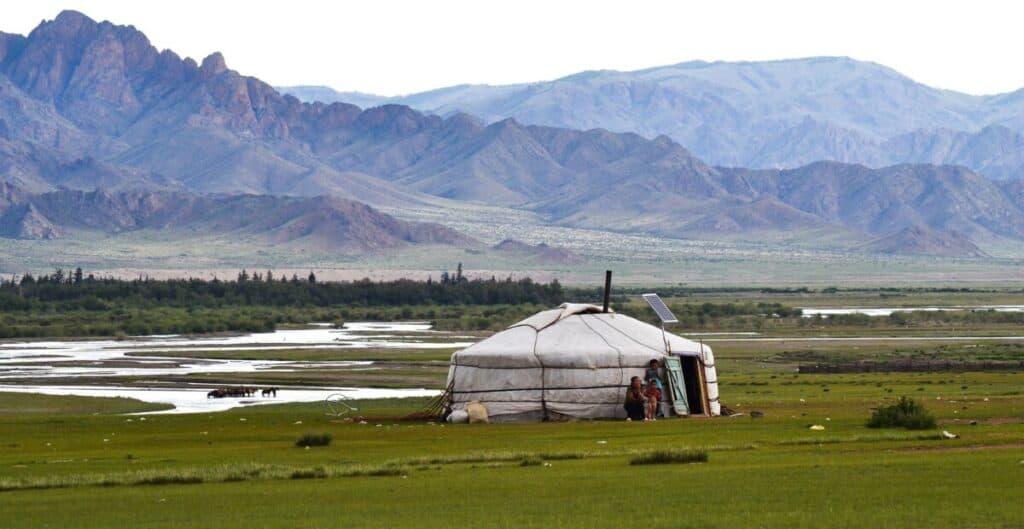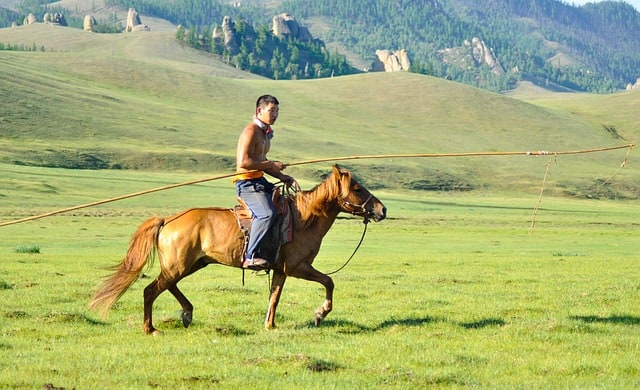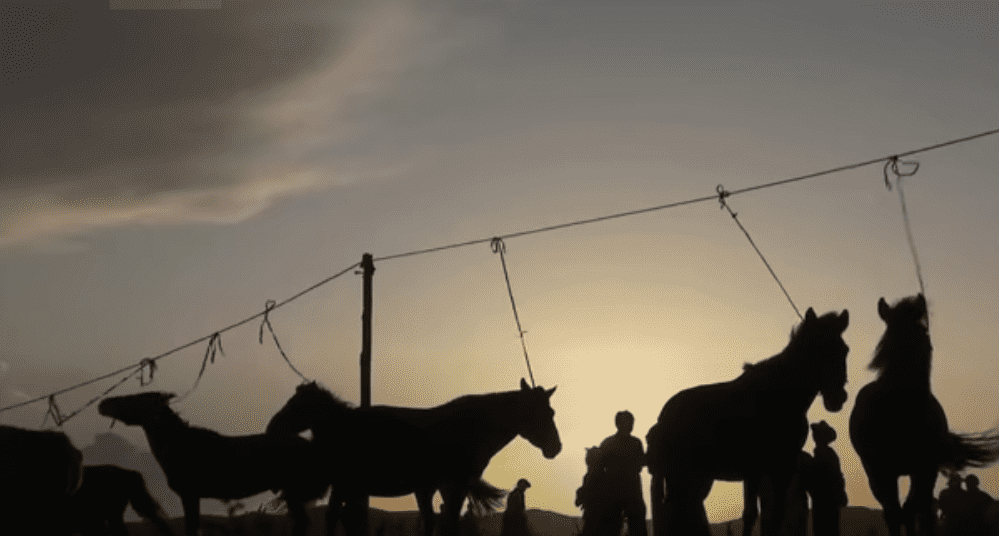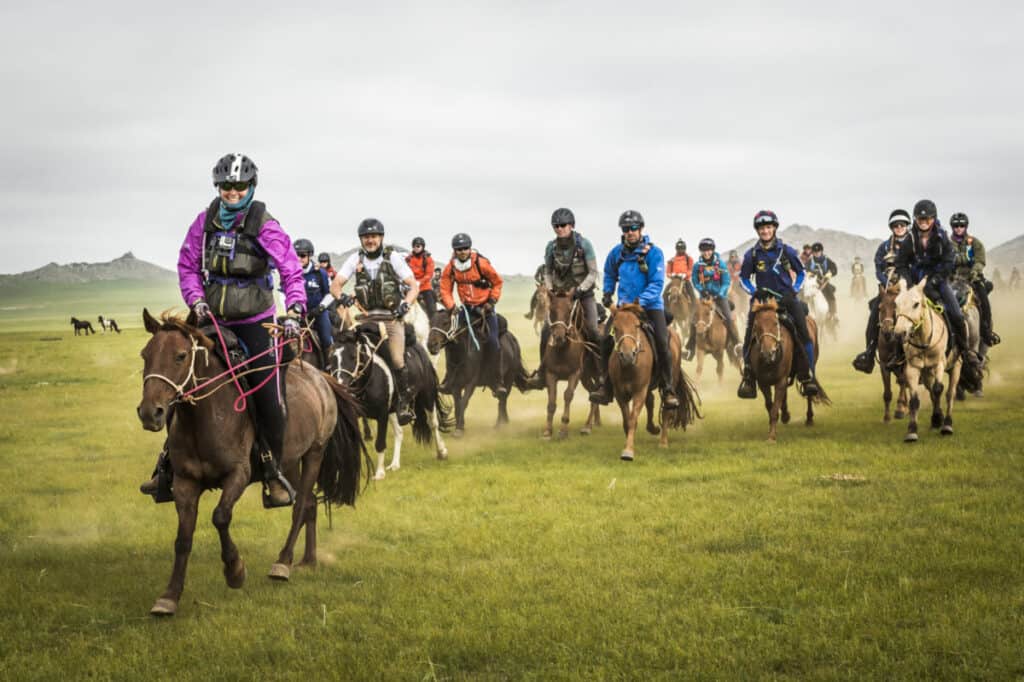The Truth Behind The World’s Longest & Hardest Equine Endurance Race.
Imagine the thundering sound of galloping hoofs across an open and seemingly endless plane as eager equestrians push and test each other for countless days, all in pursuit of claiming the title as champion of the world’s largest equine endurance race. This is the Mongol Derby, the world’s longest equine race that tests both the mind and body to its extreme limits.

The History Behind The Race.
The implementation of the Mongol Derby acts as a recreation of Genghis Khan’s equine messenger system developed in 1224. Khan had devised a plan to increase the efficiency of the Yam postal system used by the Mongol army for speedy communication during the wars. He implemented a system of stations posted every 30 to 40 kilometers, where soldiers could find food, rest areas, and new horses ready for the long travel ahead. A relay rider would be prepared to finish the journey to ensure the rider and horse’s optimal health at each station. As the system became more readily available to the general public, the Mongol Empire soon realized the considerable misusage, resulting in it’s ultimate termination.
The Mongol Derby Recreates The Ancient Postal System of Genghis Khan.
Today, the ancient inventions of Genghis Khan are represented in this annual race, celebrating the riders and horses of Mongolia’s rich history. Since its creation, approximately 40 riders from around the globe travel to the Mongolian Steppe to try their hand at the race. Over the next ten days of their lives, riders will eat, sleep, and breathe the Mongolian wildlands’ unforgiving terrain. After paying an astounding £11,375 in entry fees, riders arrive in Mongolia, only aware of the rigorous race’s basics. Here’s what they know: each rider is given access to nearly 30 Mongolian horses, a support team, pre-racing training, and access to the 25 stations along the journey for rest and, in some cases, rehabilitation. But as far as the actual course goes, the riders are only informed of the route one day before their journey, leaving them to fend for themselves in navigation and pacing practices. To ensure an unparalleled adventure, a different course is trialed and designed each year with a wide variety of Mongolian terrain for riders to experience.
And Their Off!
The gun rolls as 40 horse and rider teams set off on an unforgettable and unforgiving adventure. For the more ambitious riders, the first day is a chance to prove their endurance ability by galloping ahead to establish a clear leader right off the bat. Others choose to take a more mellowed approach as they take the opportunity to develop alliances with other riders to ride as a team. Whether in a group or riding as an individual, the 40 riders will begin to dwindle as they set across over 1000 km of terrain, weaning out the weak day by day.
Pitt Stop With A Vigorous Vet Check!
As the riders make their way to the first station, they have already spent up to 14 hours in the saddle, having just trekked across nearly 40 km of wavering terrain. Once riders reach each station, an on-site veterinarian must check each horse to ensure that they have not been overworked. If the horses are in any way over exacerbated or show up lame, riders are docked time penalties depending on the severity of the horse’s health. The rider cannot advance in the race until the vet gives the all-clean to each horse. So while those more ambitious riders have the lead, if their horses are ill-managed, it is back to square one for them.
The Mongolian Horses Are The True Heroes of the Race.

Speaking of horses, those are the real athletes of this extreme race. Born and raised on Mongolian steppes, these horses are naturally equipped to handle all weathering environments, including extreme temperatures of minus 40 degrees Celsius during winter to over 30 degrees in the summers. In combination with their exceptional situational adaptation, these horses take the title of “easy keeper” to an entirely new level. For months at a time, Mongol horses are left out to roam the vast open fields of the Mongolian rangelands without the assistance of a helping human hand. As they graze, these horses sufficiently survive off the land’s luscious grasses and water sources as they come, subtracting the need for grains and additional feed for nutrition.
1,500 Mongolian horses are annually vetted and trained to prepare for the Mongol Derby. Before the race, horses are selected from the three million semi-feral horses amongst the steppe’s various herds, resulting in a leftover wild-side in each horse. While all are monitored adequately before allowed into the race, the horse’s wild herd-like tendencies may remain. So while a rider may have picked the sturdiest lad in the bunch, whether or not that horse cooperates is a fate entirely up to them. Considering the vast lands these horses are required to cover, the Mongolian horse was chosen for their unparalleled endurance and fearless nature.
The Mongolian Horse Small But Mighty
While notably smaller than the typical horse, do not let their size fool you. During the thirteenth century, the Mongolian horse was the Mongol army’s powerhouse, as they carried them halfway across the world, conquering all that they walked on. Since nomad days, the Mongol horse breed has seen little evolution, meaning they’re the same sturdy, fearless, and weather-proof creatures as when they first charted the Mongolian lands.
During the time of Genghis Khan, he relied on the strength and unbreakable spirit that encompassed the Mongol horse. Alongside him, the entire Mongol army needed a horse that could keep up with their rapid traveling schedules, while providing them with hardy transportation for food, water, and weaponry. Soldiers even preferred to ride lactating mares that could be used as milking animals during their long journeys. As far as the human-to-equine connection, the horses and soldiers had an unbreakable bond. With just a simple whistle of the lips, the war horses would come galloping to their soldiers within an instant, similar to that of a dog. Each Mongol soldier brought a herd of at least three to five horses for their travels, to ensure that they always had a fresh horse ready.
The Mongol horse was also instrumental in providing other vital essentials to soldiers to maintain their mental well-being. As the courageous breed that they are, the horses were able to give gifts such as spiritual power, entertainment, and in case of death, a ride to honor the dead. These horses were the perfect war breed based on their solid build, stamina, endurance, and ability to face any terrain. Their shape, drive, and unbreakable spirit make them perfect for the rigorous Mongol Derby, with courses and rules almost identical to Genghis Khan’s travels. While the horses are no different from their sturdy ancestors, the method and practices are a simple walk in the park, leaving the only thing to worry about being the rider’s capabilities as they climb abroad.
The Race is Tough & Requires a Large Community of Helpers

By the halfway marker, the competitor count can almost be cut in half, as riders start to realize the full extremity of the race. Throughout the race, riders are without a marked course, a packed lunch, or even a bed to rest their tiresome bodies. Each day, each rider must construct a plan to cross the 40 km distance with only the navigational skills they arrived with. But as the days add up, the severity of the race begins to get a little too personal for some individuals. For some, the endless hours of riding render their bodies useless, forcing them to forfeit. Others become mentally exhausted as they begin to feel an overwhelming feeling of isolation.
While galloping across the ceaseless planes with only a stubby horse beneath you, riders often forget the parade of support that is just a satellite tracker or station away. While the race encourages the idea of self-sufficiently, safety is still a priority; it merely only takes a step back to give riders some very literal space. Multiple 4x4s are barreling down the steppe to watch for fallen riders or loose horses during the race. On the sidelines is the 24 hour headquarter support team who keep a careful eye on the race using satellite trackers strapped to each rider. Besides, as each horse gets a vet check, riders also have unlimited access to the various medics ready to patch any wounds and get riders right back into that saddle. While there might only be 40 riders in the race, the Mongol Derby is an enormous project that requires over 500 people, creating an entire community.
The Final Furlong!

As the last day is upon the racers, it’s now time to see who is here for the gold. Like a scene right out of Hidalgo, the remaining riders are pictured barrelling down the last stretch of land to reach the glorious finish line. Merely completing the Mongol Derby is a significant victory in it of itself, but for those more ambitious, the idea of winning is their driving force. The 2019 winner was a man named Bob Long, who traveled from the US to take his hand at the world’s longest equine race. While 57 hundred miles from home, the 70-year-old Idaho-local became the oldest competitor to win the Mongol Derby in its 11 years of operation.
Since Long’s victory, the race is on an inevitable hold in light of current travel restrictions. But while the Mongol Derby is on a temporary pause, the race’s rich history and outstanding community will become the driving force to reenter its extraordinary nature back into the world. With such a vibrant history, support system, and passionate horses, the Mongol Derby has already made some sizable waves in the equine industry, and its only the beginning.
This Article By Jordan Bastian Was originally published in the October 2020 Issue of Irish Sport Horse Magazine. Pictures were from Pixabay and from The Adventurists Website – www.theadventurists.com
